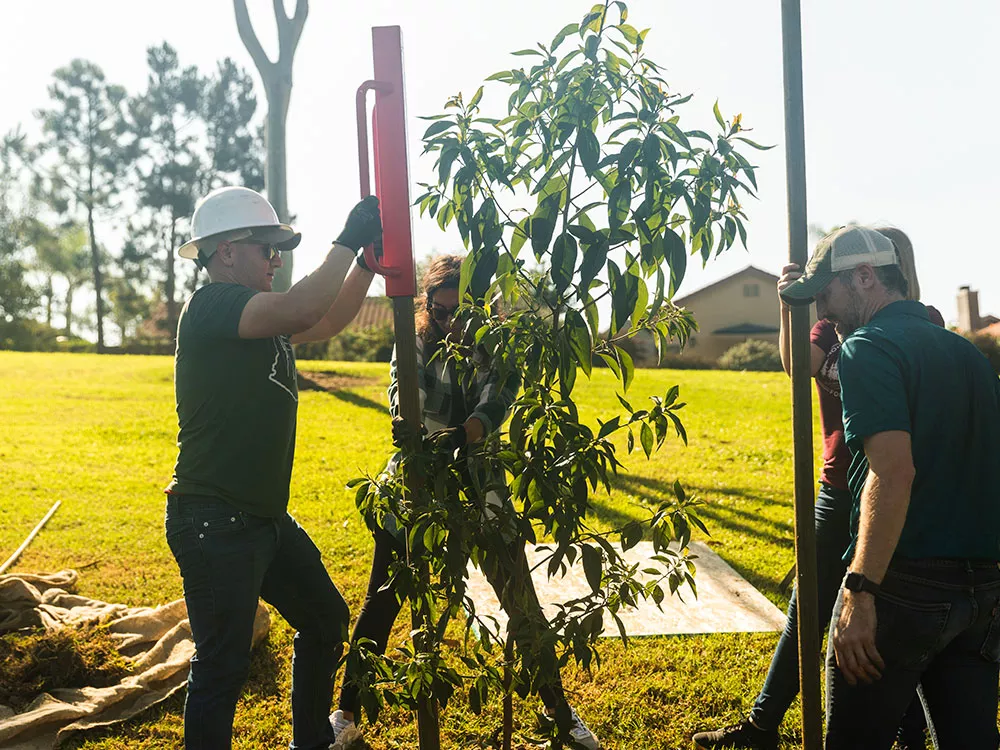Now live: The 2025 Canopy Report. Learn how Americans see trees. GET THE REPORT
Bulletin
How to Work with Volunteers — Effectively
There is no substitute for systematic, continuous community tree care programs that are adequately funded by local governments. But rarely is there enough money to do all that is needed to plant trees or to care for those we have.

Volunteers can help fill the gap.
From planting crews to fundraisers, volunteers can supplement the work of professionals, strengthen social bonds within the community, and provide advocacy and support for tree programs.
“We promise not to waste your time.” This was welcome reassurance in a letter of invitation to participate as a volunteer in a new project. In fact, the concept behind the statement is probably central to the success of working with volunteers.
Each year, Americans contribute more than 7 billion hours of time to good causes, including tree programs. In most cases, volunteers are already busy people, and in all cases, they have hearts of gold and a sincere desire to make the world a better place in which to live. These people deserve our thanks — and they deserve careful attention so the best possible use is made of their time and talents.
In community forestry, volunteers have served on tree boards for decades, planted millions of trees, spent untold hours pruning small trees, raised large sums of money, and contributed in other ways too numerous to list. Of the many lessons that have emerged from this experience, perhaps the most essential is that when volunteers are well-organized and guided by skilled leaders, the result is mutual satisfaction for both the individual and community officials.
Unfortunately, too often the happy marriage between volunteers and managers soon goes sour. In some cases, volunteers find that they are really not needed. Standing around on a cold, spring morning with more people than trees to be planted is nobody’s definition of a good use of time. Neither is sitting in on a poorly conducted meeting that goes on and on, dominated by a few outspoken individuals or producing little more than the need to schedule another meeting.
Then, too, there are professionals who have been let down by volunteers. Many have watched initial enthusiasm wither away when the fun wears off. Others have been promised equipment, supplies, or donations that don’t materialize. And then there is the matter of long-term care of a project site or trees that have been planted. Many urban foresters have found that volunteers show little interest in watering, pruning, stake removal or the other care a young tree needs in the years following planting. If crews are not able to handle the additional workload, the trees suffer and the project may even fail.
When well-managed — and when not expected to substitute for the professional workforce that is the backbone of larger communities — volunteers are a valuable resource. When not managed effectively, or when city officials view volunteers as a way to avoid financial responsibility for trees, volunteers can actually be detrimental to community forestry. This bulletin contains suggestions that should help nourish a positive, beneficial relationship both within volunteer groups and between volunteers and the professionals with whom they work on behalf of trees.
In This Bulletin
Here’s what’s inside:
- Avoiding Start-Up Pitfalls – a checklist for helping to get a volunteer program up and running
- Understanding Volunteers – getting to the heart of why people volunteer and how they can be most useful
- Five Steps to Successful Volunteer Management – basic management techniques to ensure a good working relationship with volunteers
- Not All Tasks are Suitable for Volunteers – identifying which projects could be handled by volunteers and which should be left to professionals
